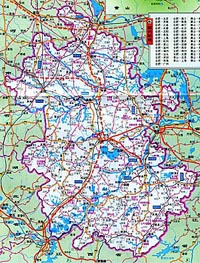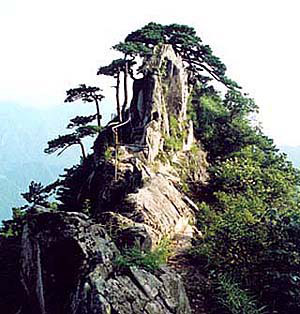Anhui People:
55.5 million

99.5 % of population are of the Han ethnic group, with the rest mostly of the Hui and She minorities.
General Information: Anhui ("Peaceful Emblem") has a complex physical topography. It is crossed in the north by the Huaihe River and in the south by the Chang Jiang (Yangzi River), with alternating areas of plains, hills, mountains, and lakes and low-lying areas. Most of the
Geography: Anhui is located in the southeast region of China. Although it is one of eastern China's poorest provinces, it is rich in natural beauty. The Yangzi and Huai rivers cross through the province's low-lying areas and the frequent flooding of their banks are
Anhui Map


Climate:Warm temperate zone, with hot summers and mild winters. With the Huaihe River as the boundary, the Huaivei area is situated in the temperate zone with a semi-humid monsoon climate, whereas the Huainan area is located in the subtropical zone with a humid m

Nature:Anhui's biological resources consist of abundant aquatic products and forests, which are especially noted for having many kinds of traditional Chinese herbs. Among the protected wild animals in Anhui are the Chinese (or Yangzi) alligator, Baiji (Yangzi Ri
Arrive Anhui:Highways
A total of 39,264 kilometers of highways are open to traffic. The Hefei-Nanjing-Shanghai expressway is a thoroughfare linking up cities in the Yangtze River Delta. In 2003, the northern section of the Hefei-Xuzhou Expressway was completed and
Anhui Economy: Today Anhui is one of the most important agricultural provinces in China. The major staple crops are rice, wheat, beans, maize, sorghum and sweet potatoes. Cash crops include cotton, tobacco, peanuts, sesame, rapeseed, tea, hemp, silk, fruits, tung oil, a
Story of Anhui: Anhui was the first region of southern China settled by Han Chinese, who moved south in the 3rd century BC. Although rich in agricultural potential, Anhui was economically backward in the past because of frequent floods and droughts. History records 8,614
Anhui Tourism: Anhui has abundant tourism resources, featuring many well-known natural scenic spots well-preserved cultural relics. Currently, there are five state-level scenic areas, including Mount Huangshan, Mount Jiuhua, Mount Tianzhu, Mount Langya and Mount Qiyun,
Shopping: Anhui is well known for its various craftworks, such as rice paper, ink stone and Chinese ink.
Cuisine: One of the three famous cuisines of Anhui Province is called Wannan. Its dishes are stewed or braised to exact temperatures, and are described as being "greasy but generous in portions." One of the noted dishes is Salted Fresh Trout.
Anhui Culture: Most natives of Anhui Province speak one of the Mandarin Chinese dialects. Inhabitants of extreme southeast Anhui and northwest Zhejiang Province speak Huizhou, previously considered to be part of the Lower Yangzi family of Mandarin dialects but now consi








